began with a bunch of unconnected thoughts, and a conversation with tom.
![[z_images/IMG_6445.webp]
i then began to do research. i was primarily inspired by programmable droplets. i remember seeing this a couple of years ago, when i was thinking of responsive graphic design (which didn’t quite pan out).
the idea of physical objects moving programmatically (not robots) was exciting to me. the simplest way for me to make this was to use electromagnetism, and make a panel with a grid of electromagnets that i could, then, control programatically.
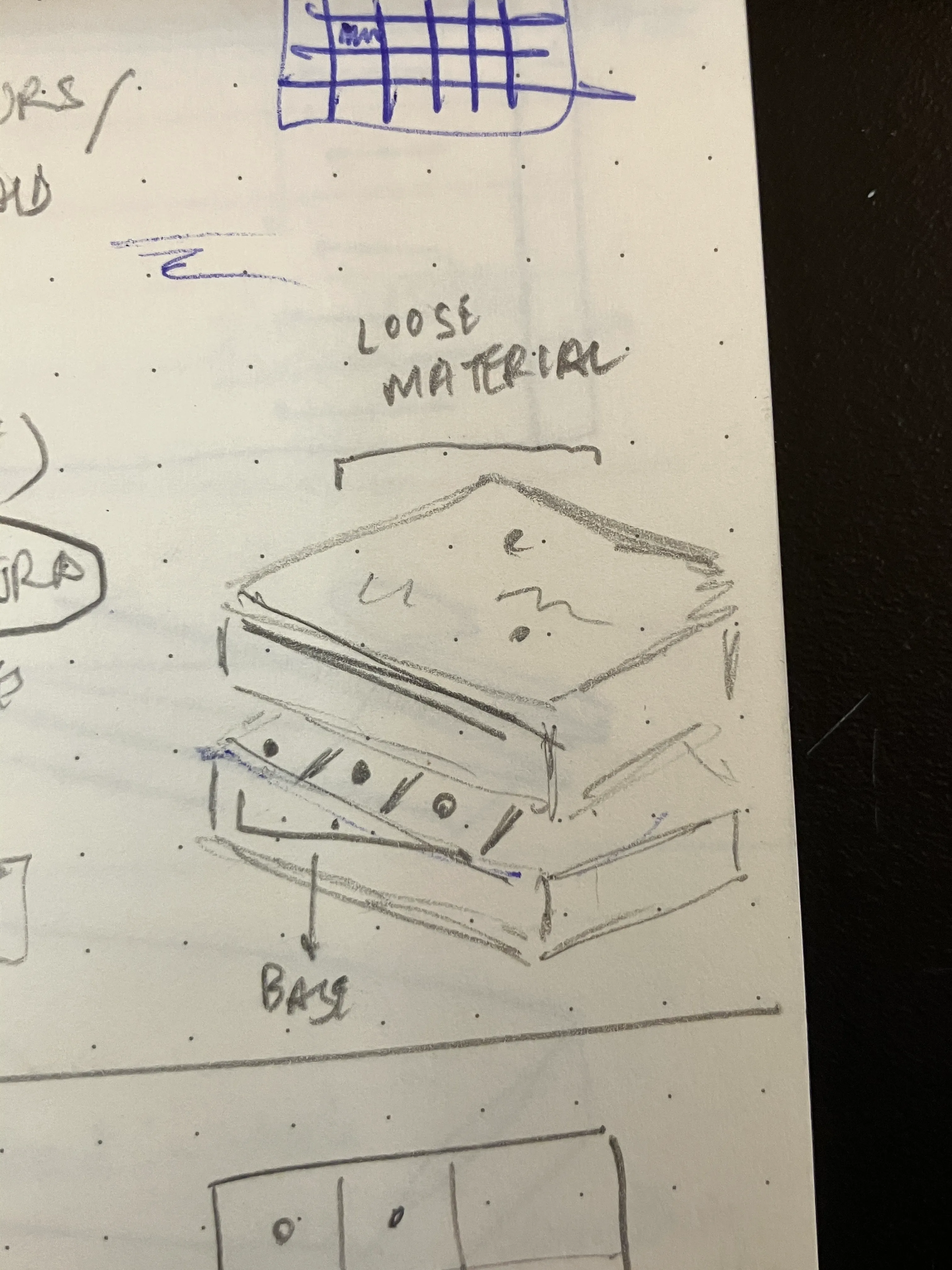
then, i attempted to make a couple of electromagnets, to programmatically move an object between them.
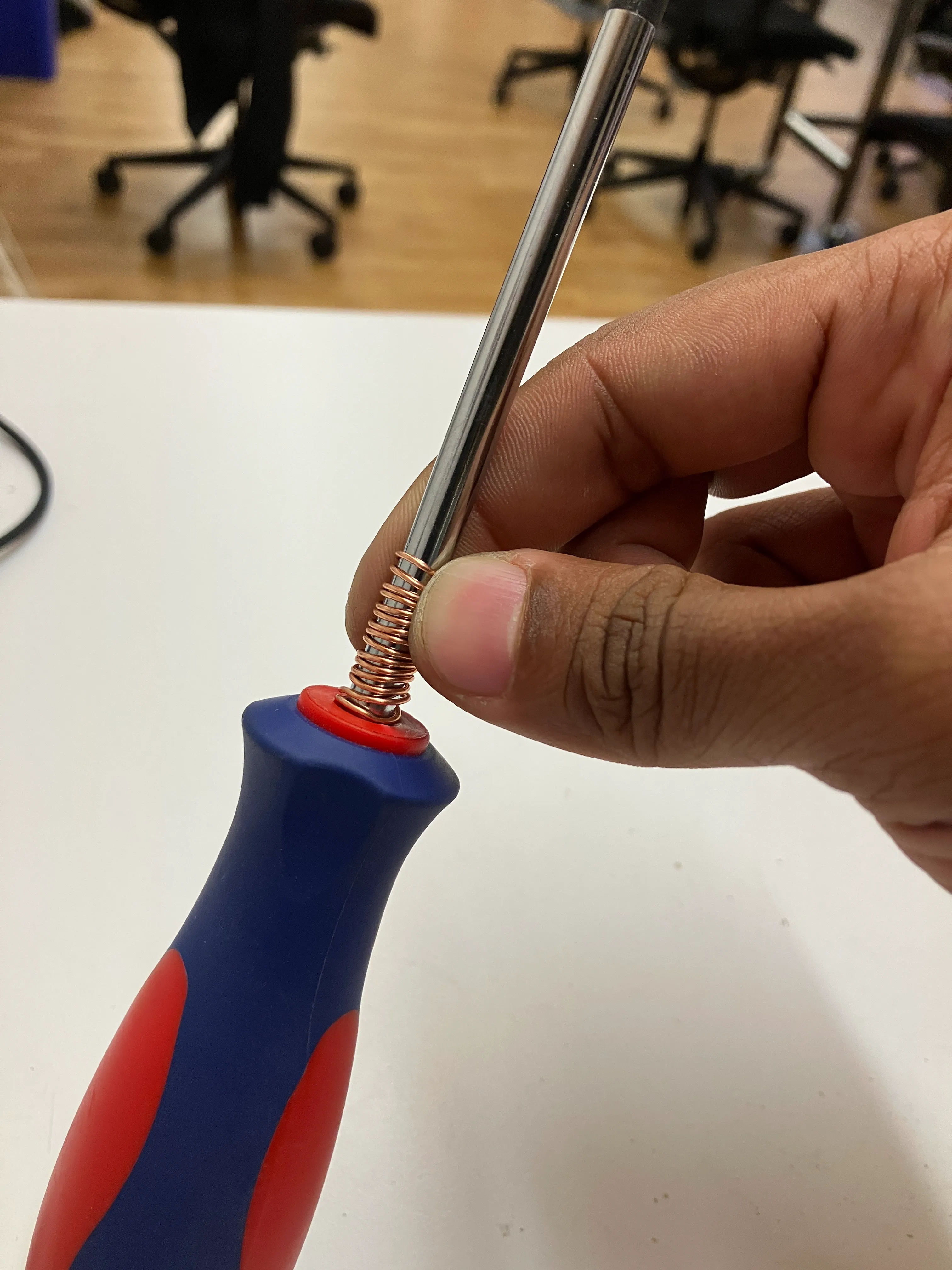
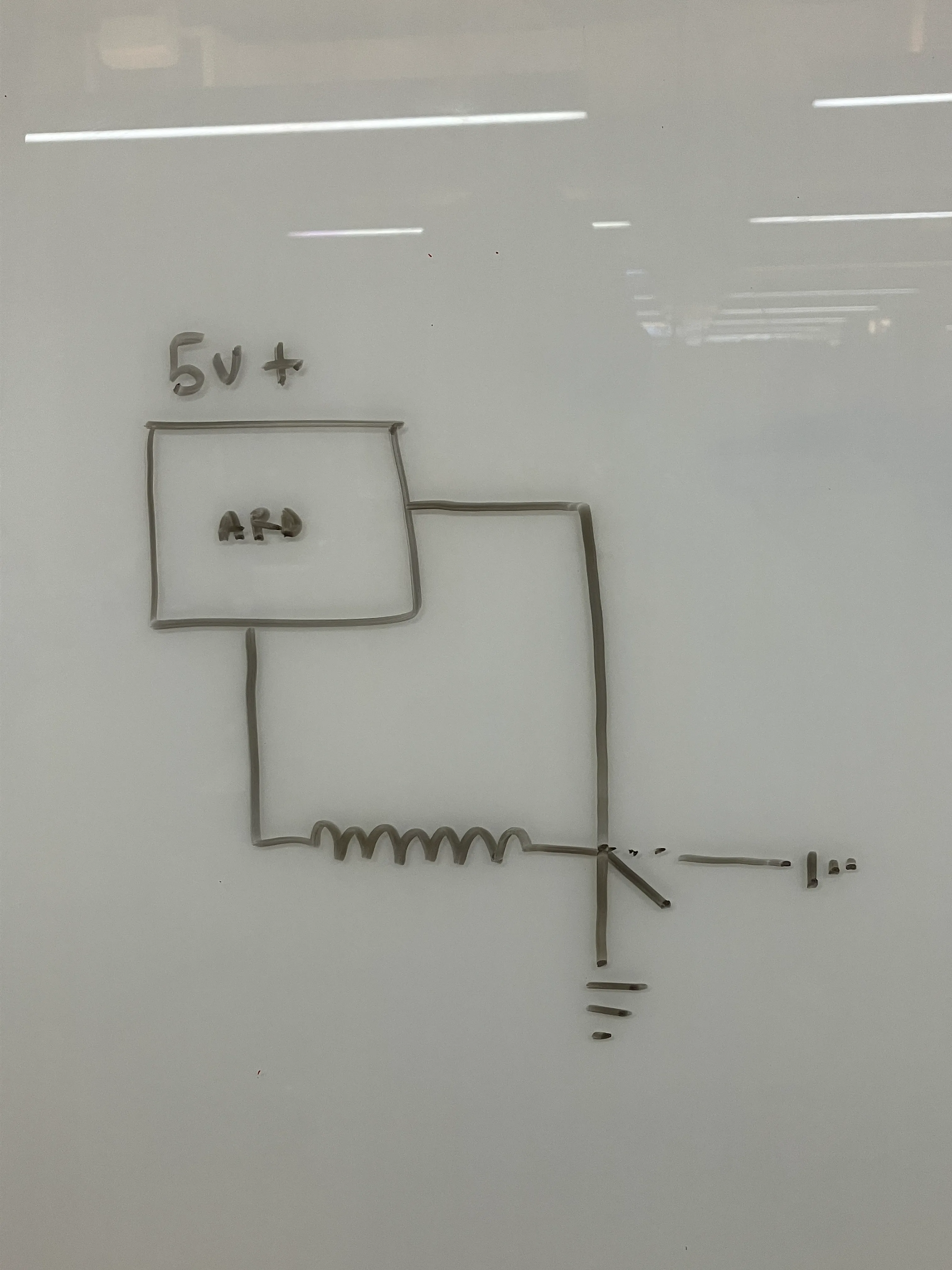
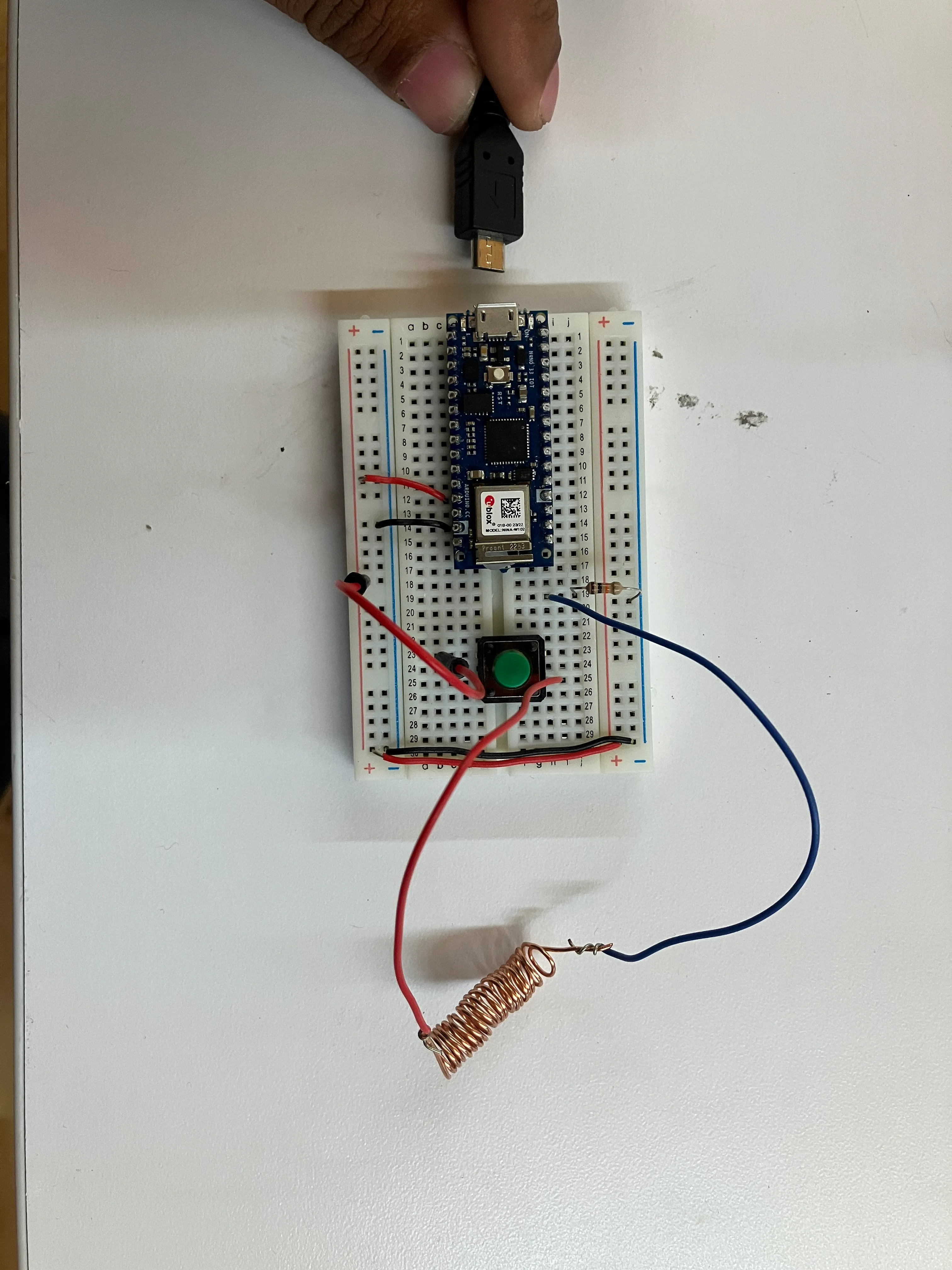
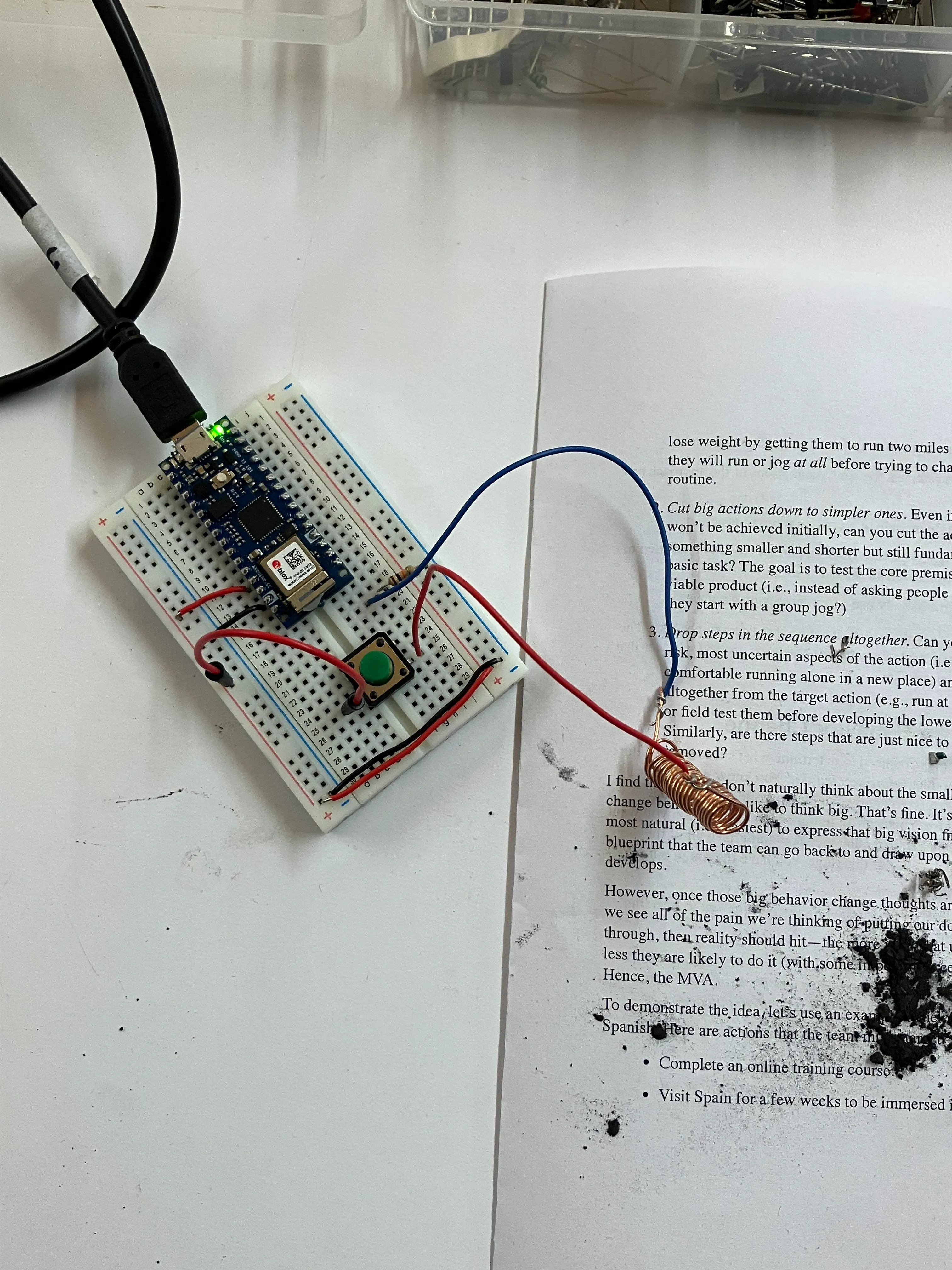
that didn’t work. christina tang & i later spoke about electromagnets (perhaps less current was flowing through it), and she explained transistors to me.
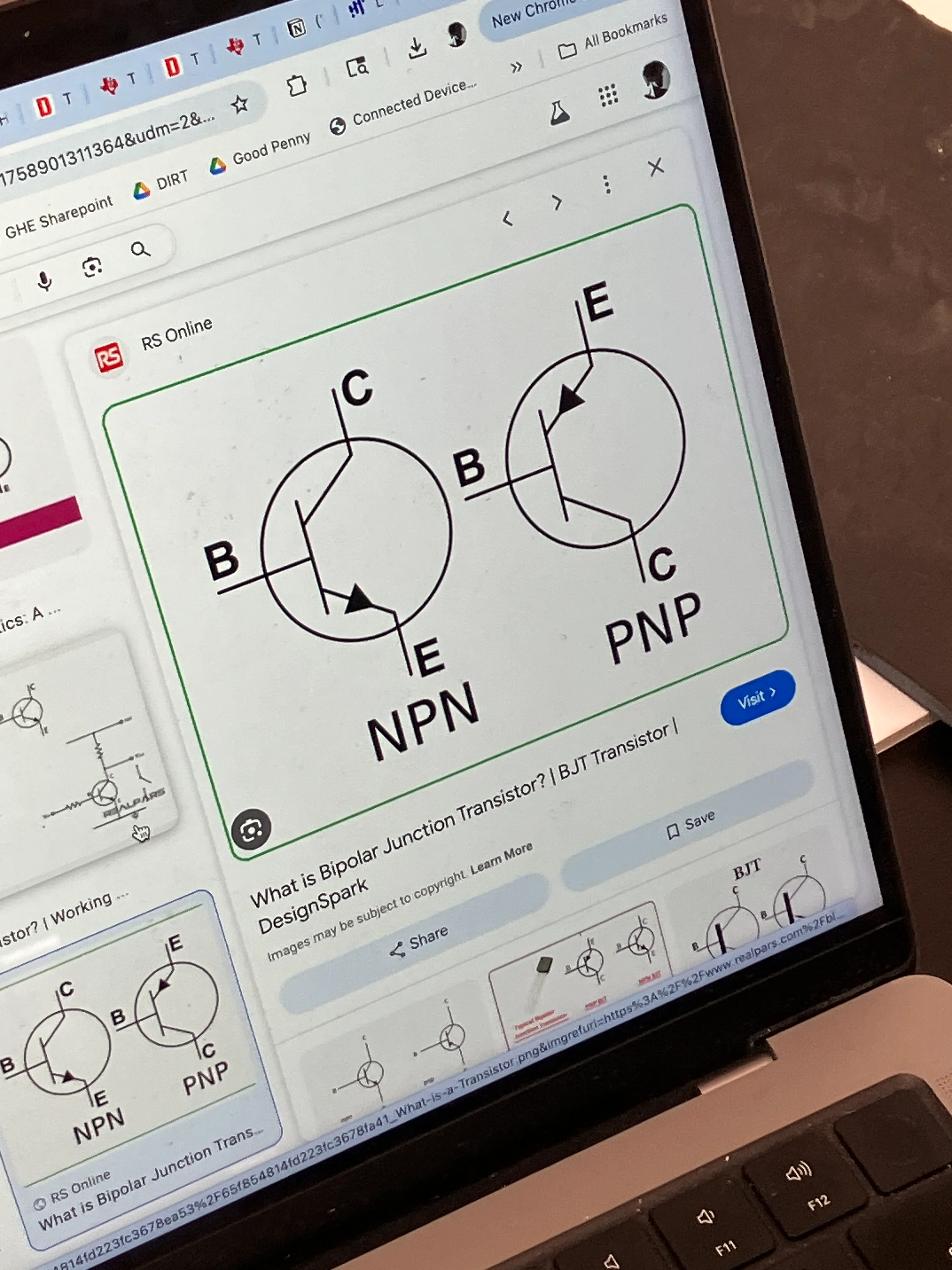
essentially, transistors are of two types: npn or pnp, meaning that npn (negative positive negative) closes the switch to allow current to pass through it (when the switch or base receives voltage), whereas pnp opens the gate (not allowing current to pass). every transistor falls within these two types.
i then made and tested many more self-made-electromagnets.
 _i| --------------------------- | -------------------------- |hrough them, and i removed the ar othing happened.
_i| --------------------------- | -------------------------- |hrough them, and i removed the ar othing happened.
someone then suggest.webpt i talk to nikolai. he gave me a magnetically-operated switch (which was very cool), to test whether the electromagnets were generating even the slightest bit of magnetism.
none of them did. i also studied a bunch of electromagnet-math:
and
where:
μ0 = 4π*10power-7
F is the force in Newtons
N is the number of turns
A is the area in length units squared
I is the current in Amps
g is the length of the gap between the solenoid and a piece of metal.
https://www.instructables.com/POWERFUL-ELECTROMAGNET-5KG-LIFTING/
watched a little bit of sensor-interfacing, as part of the lab.
i’m going to come in tomorrow and just mess around with sensors, reading data, and making small, fun things instead of trying to get this massive project to work.
250929_1411:
i wanted to make a servo work first.
i knew i needed more current, to give it enough inertia. i grabbed 3 components, all from the transistor rack and read their data-sheets. one turned out to be a voltage regulator.
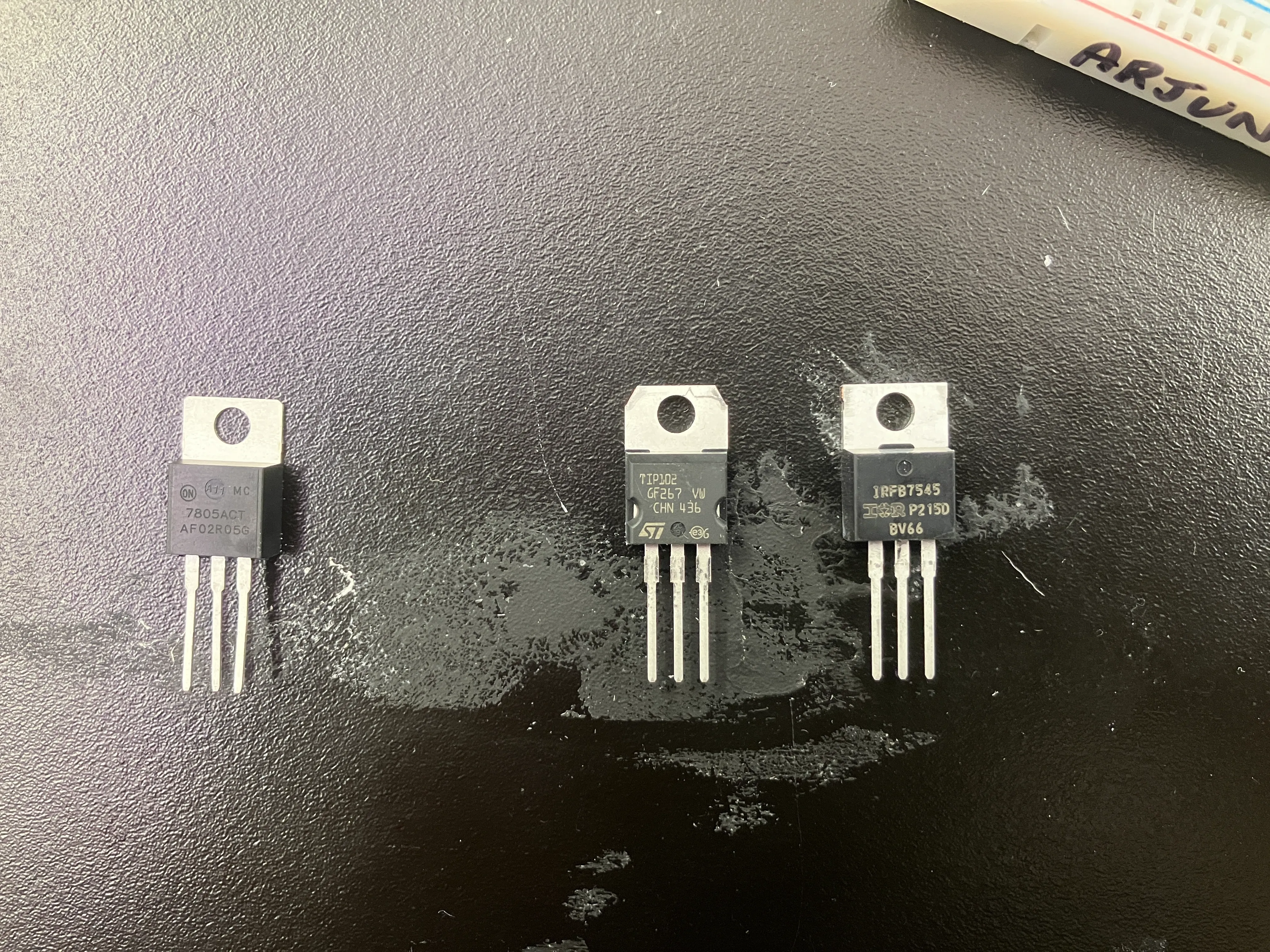
tip102 is an npn transistor. i chose to use that, because i understand how they work.
in this case, the idea.webpat the servo has voltage coming in via the transistor. in hindsight, i may not understand how transistors work.
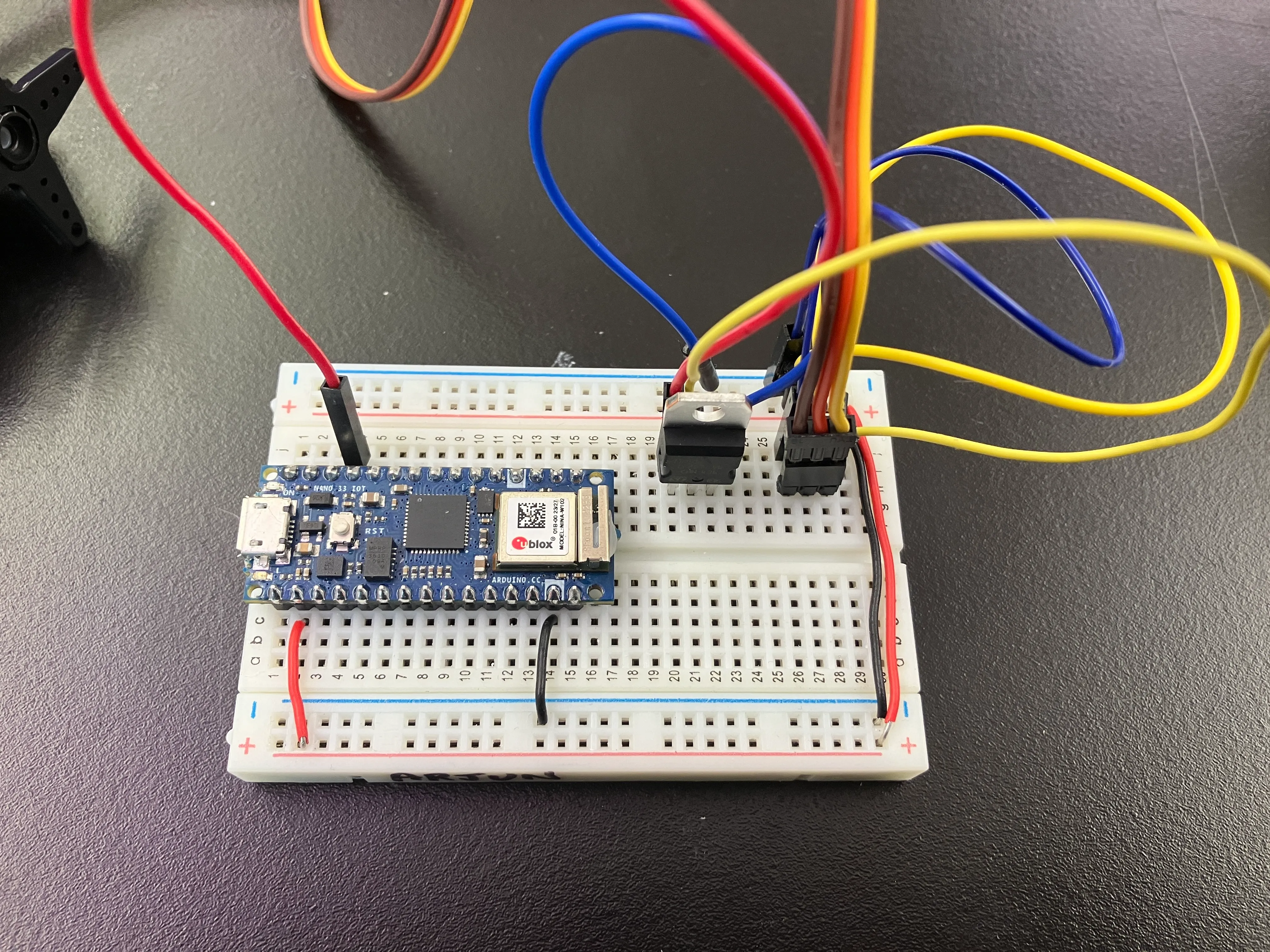
great; so, this doesn’t work.
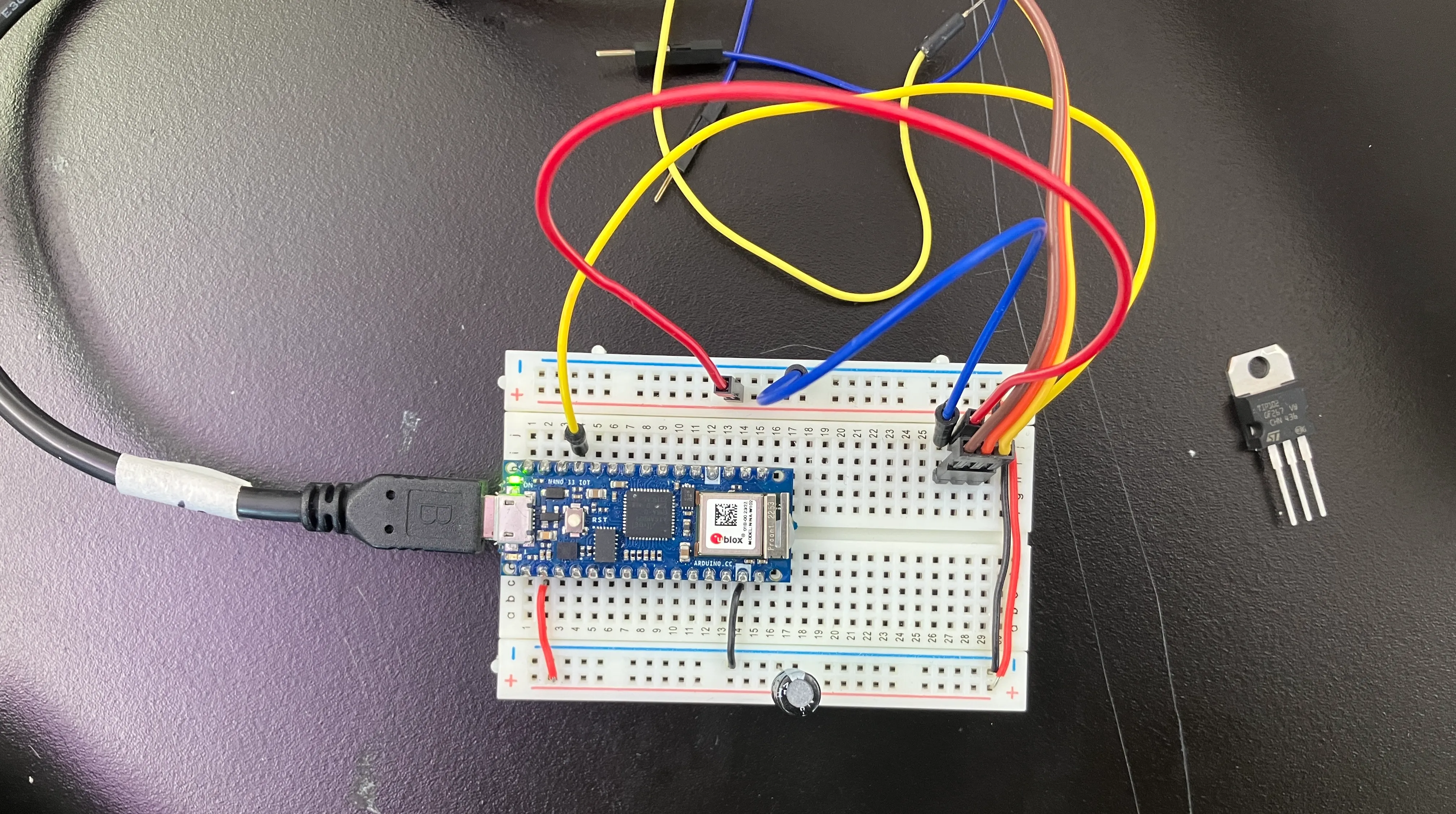
i’m going to figure out why. my first guess is that the motor is not receiving enough current.
second test: the id.webpto use a transistor to amplify the voltage given to the servo.
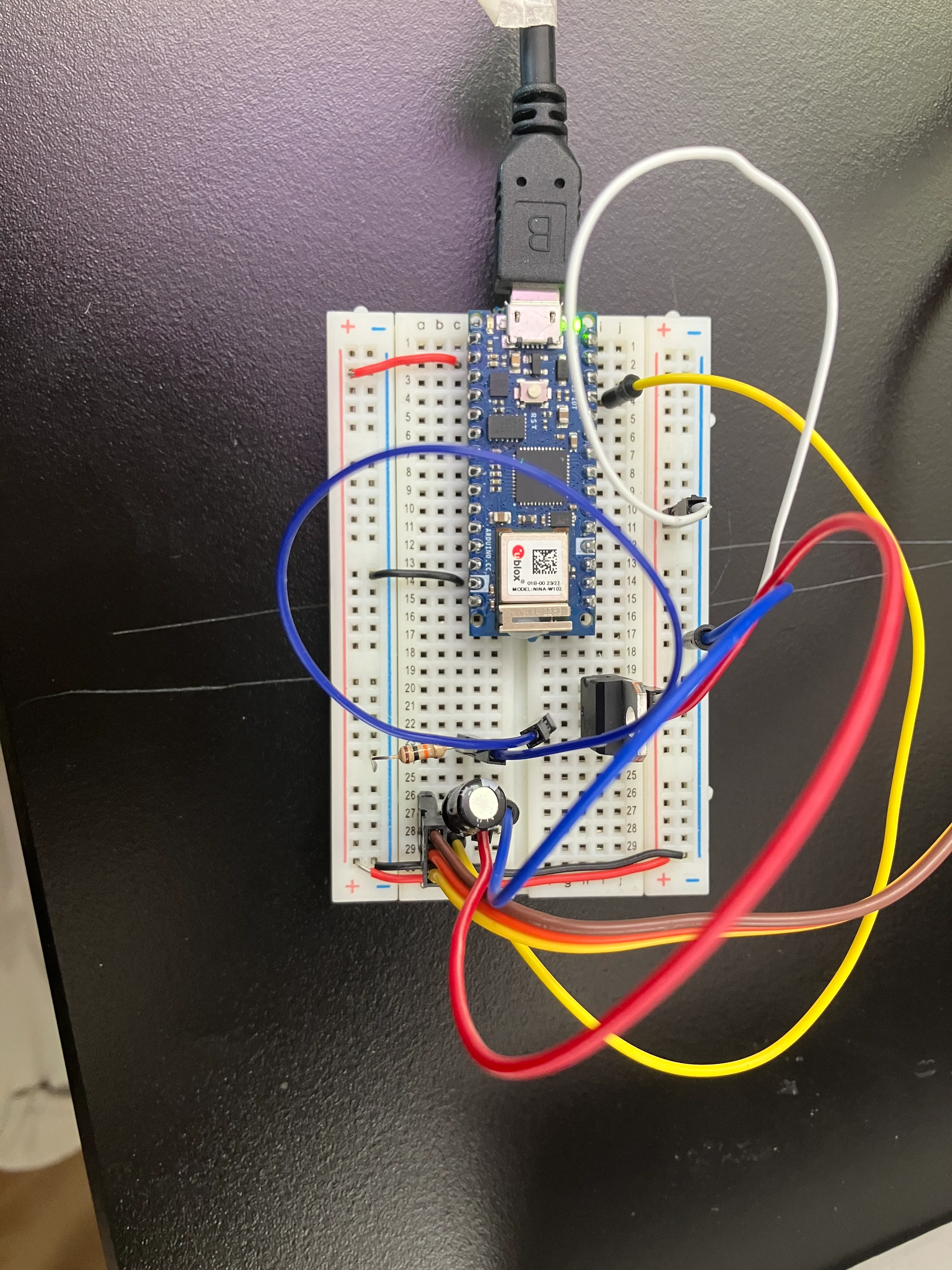
i then bugged nikolai for help. we discussed how transistors are used, and how i may use a different power source to power the servo. he also suggested using an oscilloscope to debug my circuit.
IMG_6459.webpbp
i decided to do this, and have two different circuits.
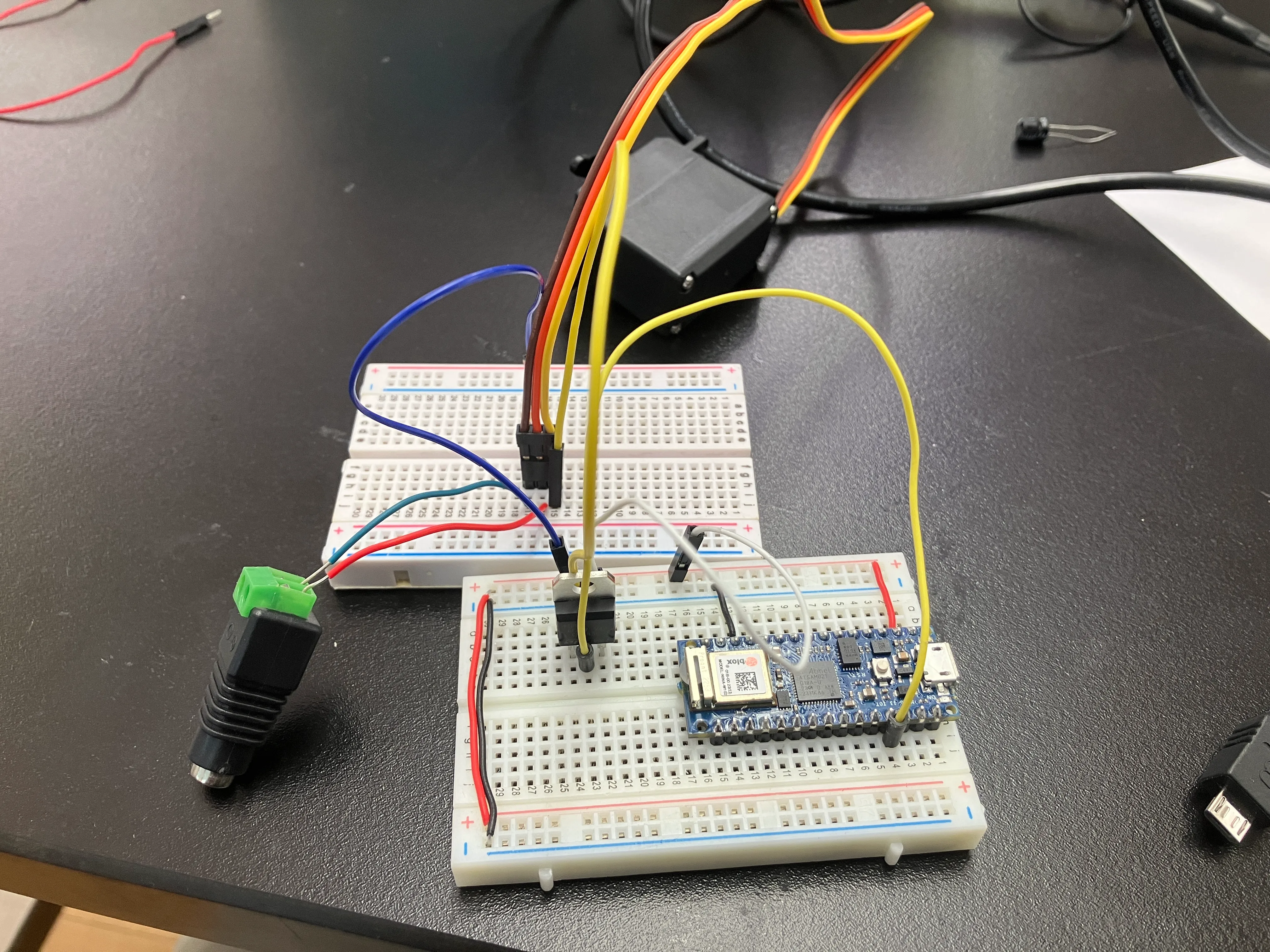
that didn’t work, and i’m not quite sure why. it should just connect 1 & 3.
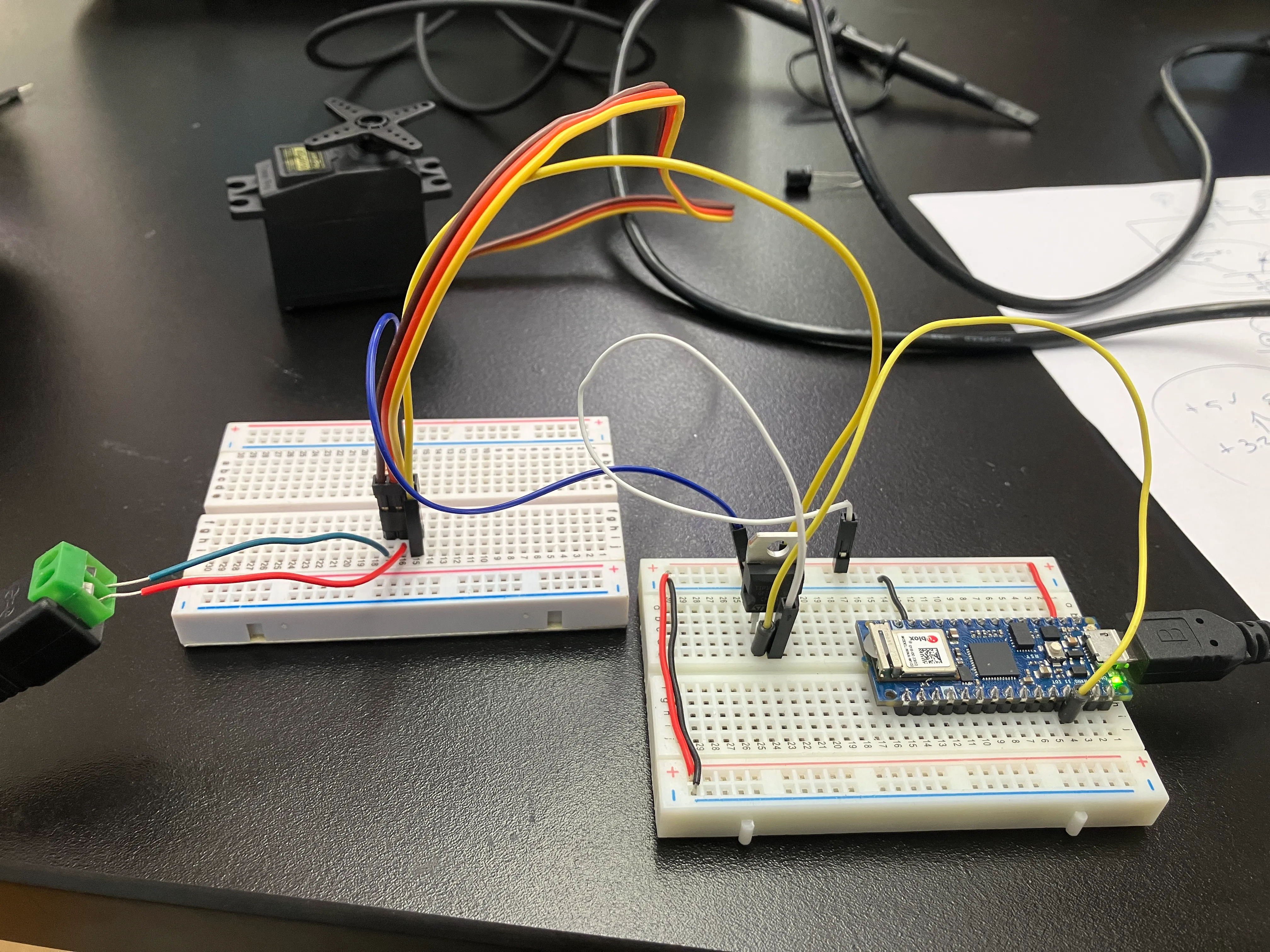
i don’t get it. what is wrong? this should essentially boost the pulse going into the arduino.
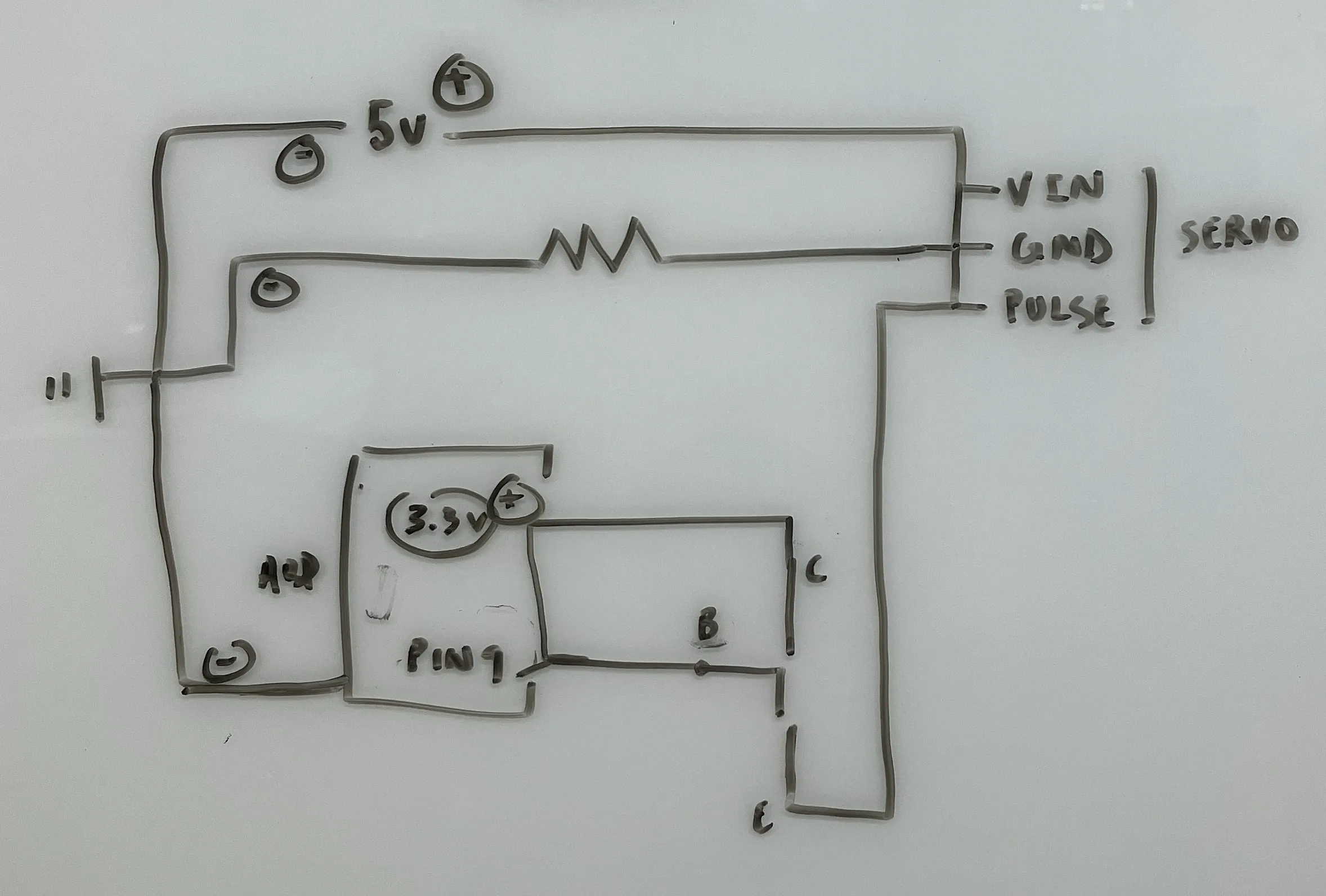
but, when i measure with an oscilloscope, there is an increased voltage being passed via the transistor.
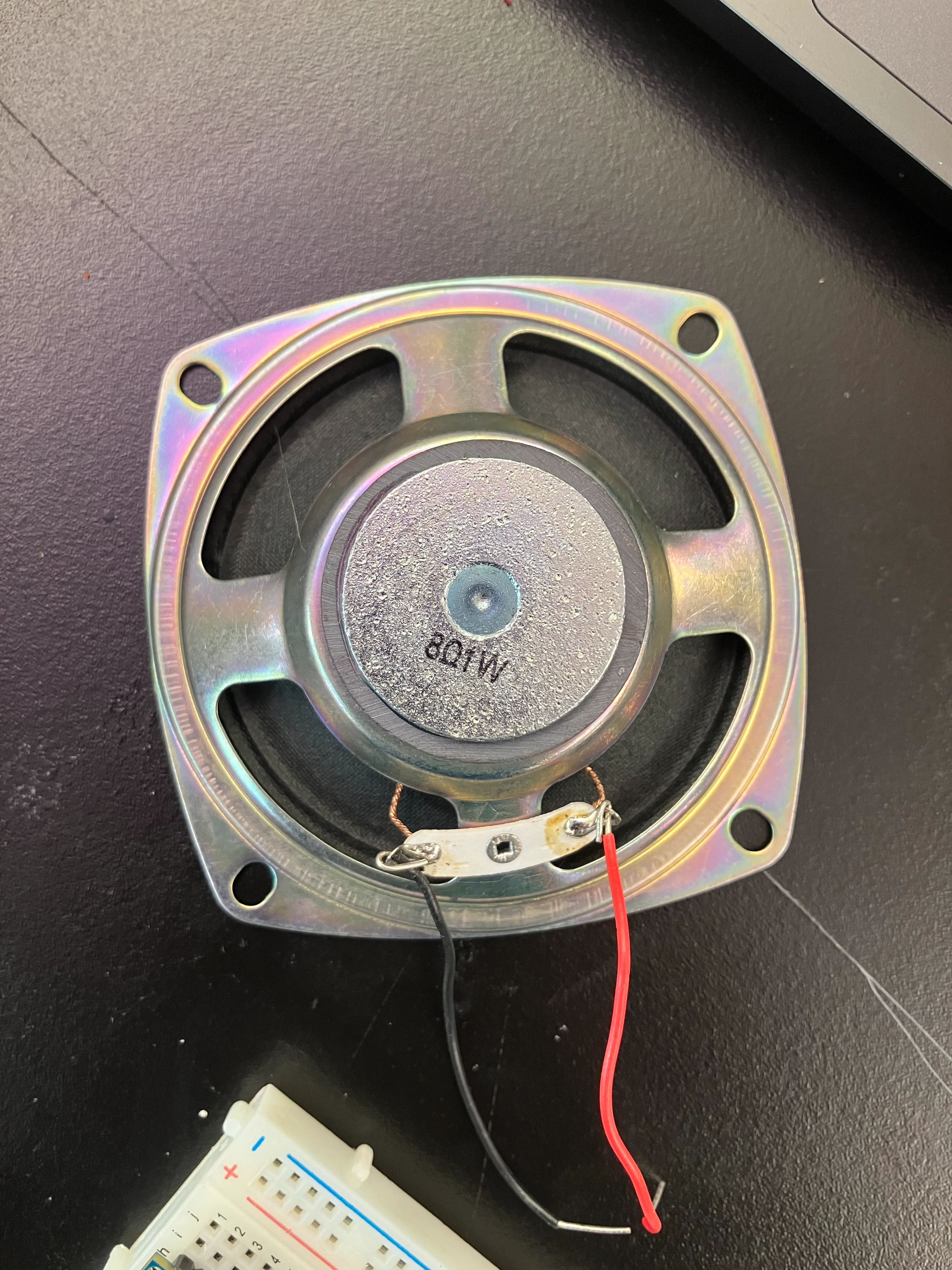
why did this not work?
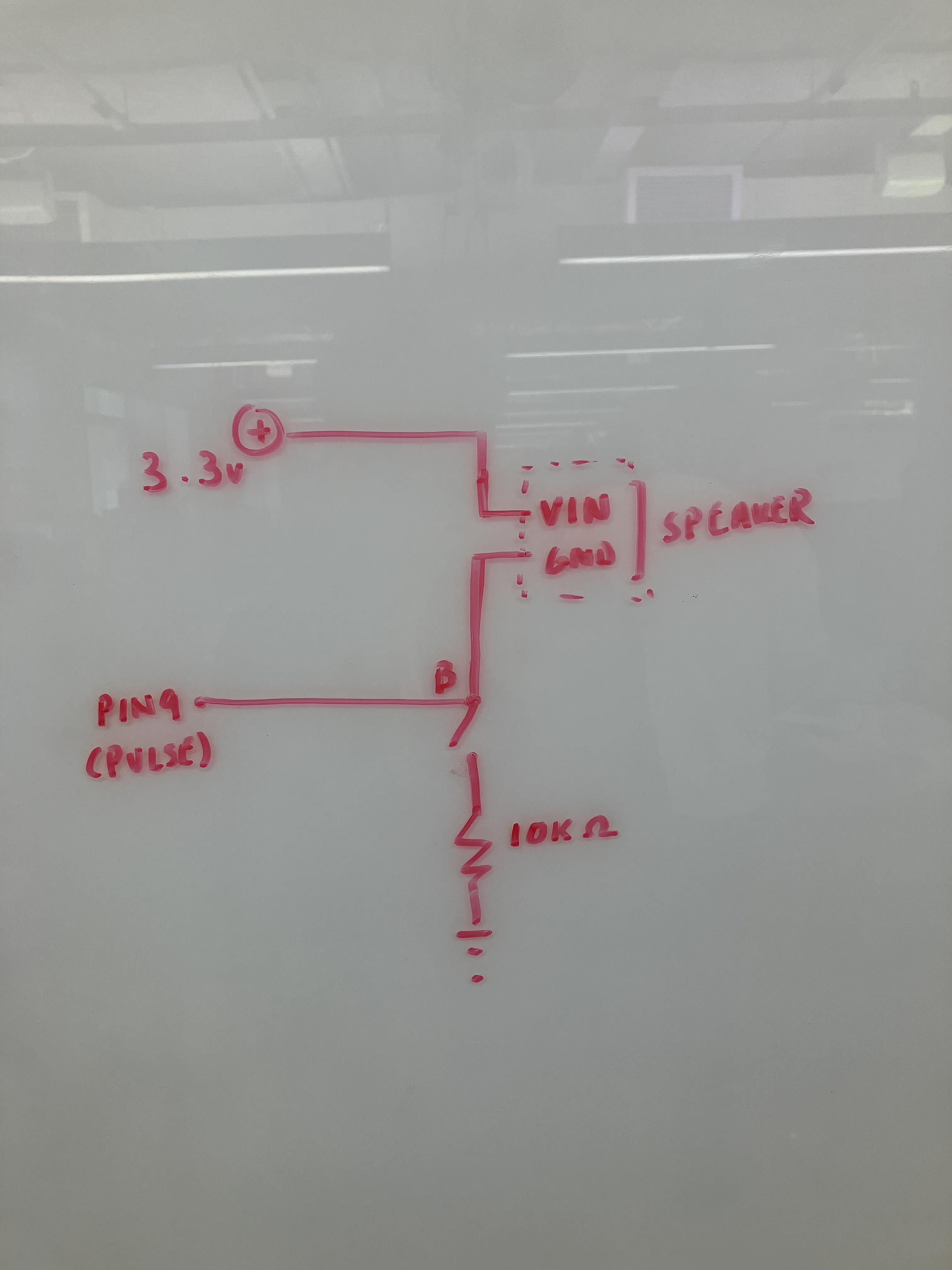
i wanted to use a variable power supply to boost the voltage going into the speaker.
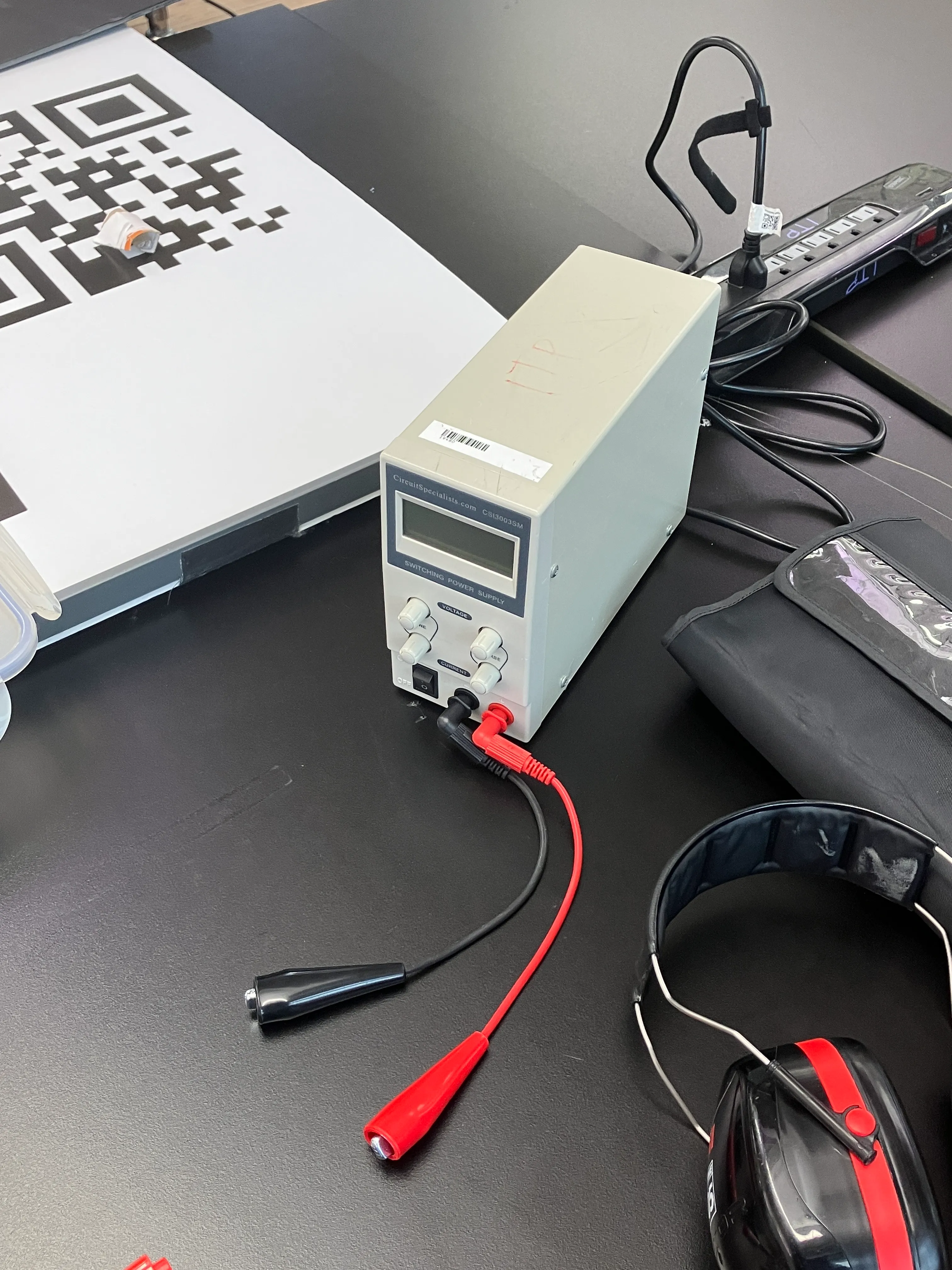
but, i couldn’t get the speaker to work. so.
[[people/aram|ar.webpsked me why i don’t use chat-gpt to get it to work, and bother racking my head instead.
i told him that it is because i can get it work by asking a chatbot, but (a) i won’t bother understanding how it worked, and (b) i would lose out on all the other potential learning that ‘not knowing’ could lead me to (such as actually understanding what transistors do).
yes, not asking an ai-chatbot consumes more time, but it gives me more than a answer. related to case against ai.
summer then asked me about a question on the sensor-change labs. i realised that everyone is so concerned with getting through the labs, almost like a checklist. i wonder what the right approach is — my gut says it is to try things, and learn experientially; but i may be wrong.
i do, however, think it is about investment. maybe some people are doing physical-computing because it’s a requirement. i enjoy understanding — i can’t fight it, it’s general curiosity.
and both sides are okay; no one’s wrong.
i then thought more about the midterm. tom’s reply stuck (and stung):
Making an electromagnet is out of the scope of the assignment. The assignment is to make a physically interactive device using the techniques we’ve covered thus far. Electromagnetism isn’t one of those techniques.
this week i understood that i’m far off from making something ‘big’. in line with my principles as a creator, i need to stay true to my curiosity. so, i pulled out a giant sheet of paper, and re-thought my midterm; with more authenticity.
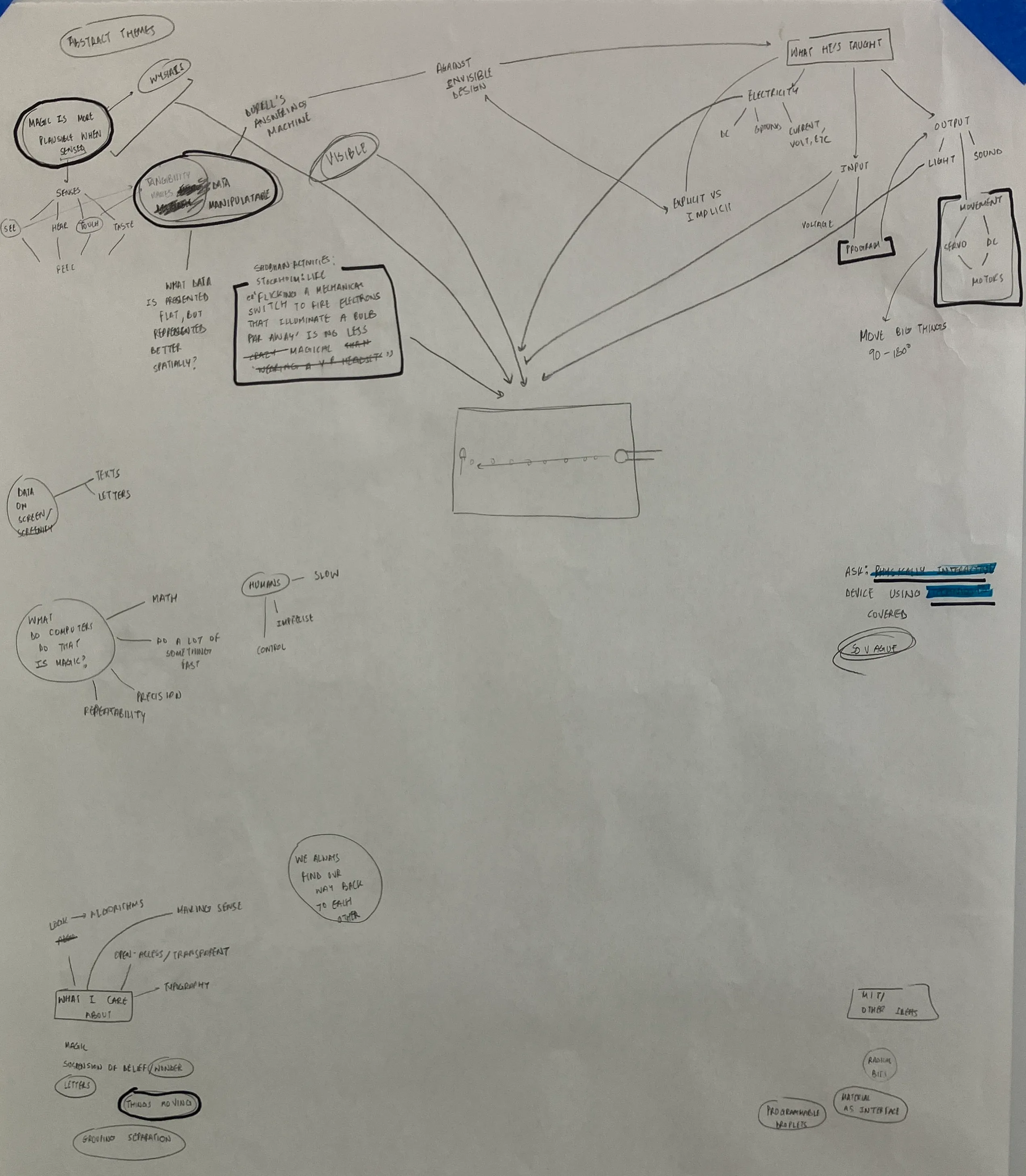
my project is now about by the magic that we’re dealing with, but fail to acknowledge. inspired by this dialogue between shobhan and rajesh-dahiya (a ‘famous’ designer in india):
dahiya tore-down m.webpeoning prejudice against recent forms of first word art: when i tried to criticise AR/VR, he cut me off, pointed at a light-switch, and wondered how ‘flicking a mechanical switch to fire electrons that illuminate a bulb far away’ is no less crazy than ‘wearing a virtual-reality headset’.
i now want to show what happens when you light up an led, make people actually send electrons via a circuit (represented by tiny leds, under a panel).
i’m okay with doing ‘small’ or ‘light’ things (see https://www.workingtheorys.com/p/make-something-heavy), because i am staying true to my curiosity. i’m not there yet, to do big (or heavy) things, and make projects like the media lab does.
i might get there someday. but it’s not today. i’m not there yet; i don’t know enough yet.